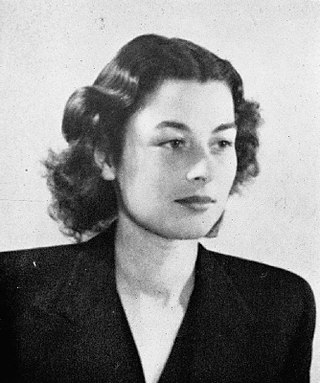
Violette Reine Elizabeth Szabo, GC was a British-French Special Operations Executive (SOE) agent during the Second World War and a posthumous recipient of the George Cross. On her second mission into occupied France, Szabo was captured by the German army, interrogated, tortured, and deported to Ravensbrück concentration camp in Germany, where she was executed.

Nancy Grace Augusta Wake,, also known as Madame Fiocca and Nancy Fiocca, was a nurse and journalist who joined the French Resistance and later the Special Operations Executive (SOE) during World War II, and briefly pursued a post-war career as an intelligence officer in the Air Ministry. The official historian of the SOE, M. R. D. Foot, said that "her irrepressible, infectious, high spirits were a joy to everyone who worked with her". Many stories about her World War II activities come from her autobiography, The White Mouse, and are not verifiable from other sources.
Gustave Biéler DSO MBE CdeG was a Canadian Special Operations Executive agent during World War II.
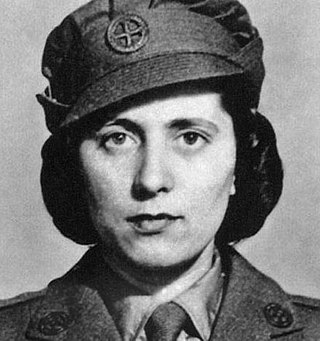
Andrée Raymonde Borrel, code named Denise, was a French woman who served in the French Resistance and as an agent for Britain's clandestine Special Operations Executive in World War II. The purpose of SOE was to conduct espionage, sabotage, and reconnaissance in occupied Europe against the Axis powers, especially Nazi Germany. SOE agents allied themselves with resistance groups and supplied them with weapons and equipment parachuted in from England.

Yolande Elsa Maria Beekman was a British spy in World War II who served in the Women's Auxiliary Air Force (WAAF) and the Special Operations Executive. She was a member of SOE's Musician circuit in occupied France during World War II where she operated as a wireless operator until arrested by the Gestapo. She was subsequently executed at the Dachau concentration camp.
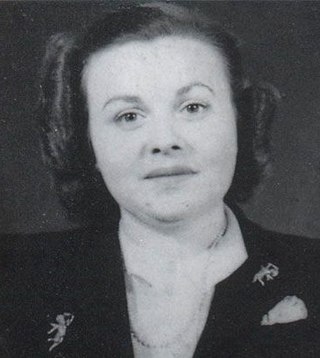
Madeleine Zoe Damerment was a French agent of the United Kingdom's clandestine Special Operations Executive (SOE) organization during World War II. The purpose of SOE was to conduct espionage, sabotage, and reconnaissance in countries occupied by the Axis powers, especially Nazi Germany. SOE agents allied themselves with resistance groups and supplied them with weapons and equipment parachuted in from England. Damerment was first involved in escape lines helping downed allied airmen escape occupied France. She fled France in March 1942 to avoid arrest. After arriving in Britain, she was recruited by the SOE. Damerment was to be a courier for SOE's Bricklayer circuit but was captured by the Gestapo on 29 February 1944 upon arrival in France. The Gestapo knew she was coming because they had captured SOE radios and were reading SOE radio messages. She was subsequently executed at the Dachau concentration camp on 13 September 1944 along with three other female SOE agents.

Fresnes Prison is the second largest prison in France, located in the town of Fresnes, Val-de-Marne, south of Paris. It comprises a large men's prison of about 1200 cells, a smaller one for women and a penitentiary hospital.
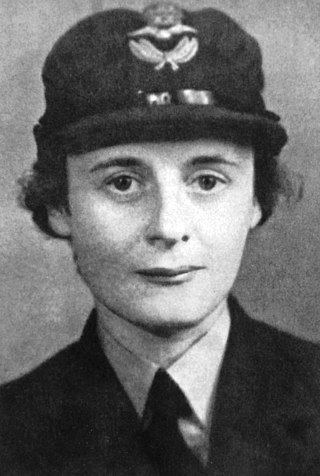
Diana Hope Rowden served in the Women's Auxiliary Air Force and was an agent for the United Kingdom's clandestine Special Operations Executive (SOE) during World War II. Rowden was a member of SOE's Acrobat circuit in occupied France where she operated as a courier until she was arrested by the Gestapo. She was subsequently executed at the Natzweiler-Struthof concentration camp.
The SOE F Section timeline lists the significant events in the history of Section F of the Special Operations Executive. The Special Operations Executive (SOE) was a clandestine organization of the United Kingdom during World War II. The purpose of SOE was to conduct espionage, sabotage, and reconnaissance in countries occupied by the Axis powers. SOE agents allied themselves with resistance groups and supplied them with weapons and equipment parachuted in from England. Section F was responsible for many of SOE's activities in France which was occupied by Nazi Germany.

Éliane Sophie Plewman was a British agent of the Special Operations Executive (SOE) and a member of the French Resistance working as a courier for the "MONK circuit" in occupied France during World War II. SOE's objective was to conduct espionage, sabotage and reconnaissance against the Axis Powers, especially Nazi Germany in occupied Europe and to aid local resistance movements. Plewman was captured by the Gestapo, and later executed by the SS in Dachau.

Lise Marie Jeanette de Baissac MBE CdeG, code names Odile and Marguerite, was a Mauritian agent in the United Kingdom's clandestine Special Operations Executive (SOE) organization in France during World War II. The purpose of SOE was to conduct espionage, sabotage, and reconnaissance in countries occupied by the Axis powers, especially Nazi Germany. SOE agents allied themselves with resistance groups and supplied them with weapons and equipment parachuted in from England.
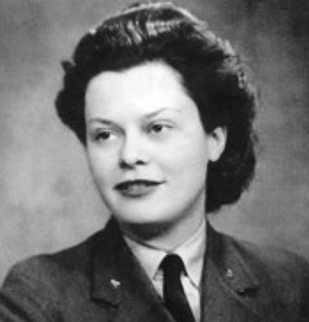
Yvonne Jeanne de Vibraye Baseden MBE, later known as Yvonne Burney, was one of approximately forty female Special Operations Executive (SOE) agents who served in France. The objective of SOE was to conduct espionage, sabotage and reconnaissance in occupied Europe against the Axis powers, especially Nazi Germany. SOE agents in France allied themselves with resistance groups and supplied them with weapons and equipment parachuted in from Britain.
Alix Marrier d'Unienville, MBE was a French-British agent in the Free French (RF) Section of the Special Operations Executive (SOE), during World War II.
Nicolas Redner Bodington OBE was a British journalist and soldier. During the Second World War, he served in the F section of the Special Operations Executive and took part in four missions to France.

Roger Arthur Landes, LdH CdeG MC & Bar, code named Stanislas and Aristide, was an agent of the United Kingdom's clandestine Special Operations Executive (SOE) organization during World War II in France. The purpose of SOE was to conduct espionage, sabotage, and reconnaissance in countries occupied by the Axis powers, especially Nazi Germany. SOE agents allied themselves with resistance groups and supplied them with weapons and equipment parachuted in from England. Landes was a wireless operator for the Scientist network in the Bordeaux region of France, and later became the "organiser" (leader) of the Actor network in the same region. After the liberation from German occupation of France in 1944, he joined Force 136 to subvert the Japanese occupation of Malaya.
Baumettes Prison is a prison in the 9th arrondissement of Marseille.

Operation Postmaster was a British special operation conducted on the Spanish island of Fernando Po, now known as Bioko, off West Africa in the Gulf of Guinea, during the Second World War. The mission was carried out by the Small Scale Raiding Force (SSRF) and the Special Operations Executive (SOE) in January 1942. Their objective was to board the Italian and German ships in the harbour and sail them to Lagos. The SSRF under the command of Major Gus March-Phillipps left Britain in August 1941 and sailed the Brixham trawler, Maid of Honour, to the Spanish colony.

Operation Aquatint was the codename for a failed raid by British Commandos on the coast of occupied France during the Second World War. The raid was undertaken in September 1942 on part of what later became Omaha Beach by No. 62 Commando, also known as the Small Scale Raiding Force.
Arthur Steele was a British soldier who joined Special Operations Executive (SOE) to operate in occupied France during the Second World War as a wireless operator carrying out sabotage and spying missions until he was taken prisoner. He was tortured for information unsuccessfully by the Gestapo and subsequently killed by the SS.
Haim Victor Gerson DSO, LdH, code name Rene, was a Special Operations Executive agent during the Second World War. He organised the Vic escape line in France. Escape lines helped allied soldiers and airmen, SOE agents, and other people in danger to escape from Nazi-occupied Europe, usually by crossing the Pyrenees mountains into neutral Spain.














